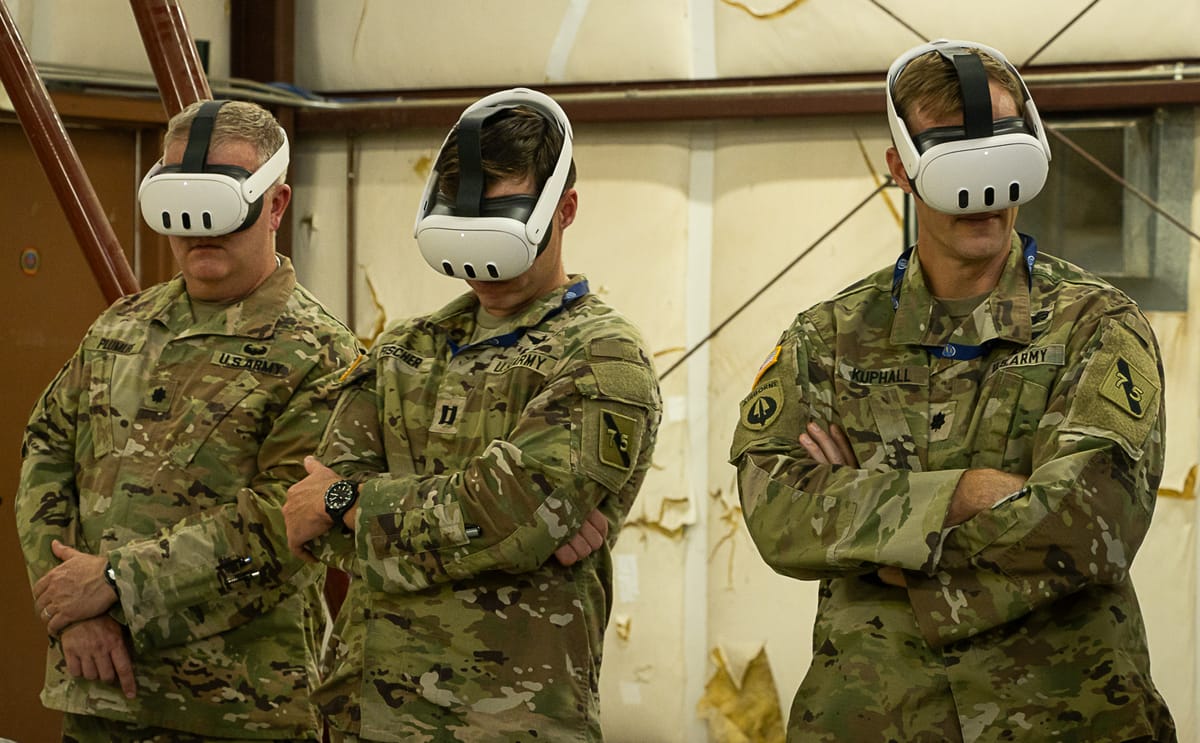The convergence of Silicon Valley and military service has reached a new milestone as executives from three of America's most influential tech companies—Meta, OpenAI, and Palantir Technologies—have been commissioned as officers in the U.S. Army Reserve. This unprecedented move signals a deepening relationship between the defense establishment and the private sector companies shaping artificial intelligence and digital warfare capabilities.
A Strategic Partnership Takes Shape
The commissioning of these high-profile technology executives represents more than symbolic gestures—it's a calculated effort to bridge the growing gap between military needs and technological innovation. As warfare increasingly moves into digital domains, the Army Reserve is tapping directly into the expertise of those building tomorrow's most critical technologies.
Among the newly commissioned officers are senior-level executives who have been instrumental in developing AI systems, social media platforms, and data analytics tools that government agencies increasingly rely upon. While the specific names and roles remain partially classified for security reasons, sources confirm that the commissioned officers include individuals with direct oversight of AI development, cybersecurity initiatives, and large-scale data operations.
Why This Matters Now
The timing of these commissions coincides with several critical developments in national security. The Pentagon's Joint All-Domain Command and Control (JADC2) initiative requires seamless integration of military systems with cutting-edge civilian technology. Meanwhile, competition with China's military modernization efforts has intensified focus on maintaining America's technological edge in defense applications.
"We're not just looking for people who understand technology," explains Colonel Sarah Martinez, a Pentagon spokesperson. "We need leaders who understand how to scale these technologies for military applications while maintaining operational security and ethical standards."
The move also addresses a persistent challenge: the cultural divide between military and tech sectors. Previous attempts to integrate Silicon Valley expertise into defense operations have sometimes faltered due to conflicting priorities and communication barriers.
The Companies Behind the Move
Meta's Strategic Pivot: Meta's involvement reflects the company's growing emphasis on enterprise and government applications beyond consumer social media. The commissioned executive brings expertise in content moderation at scale, virtual reality applications, and social network analysis—all increasingly relevant to modern military operations.
OpenAI's Defense Applications: With OpenAI's GPT models already being adapted for various government uses, having executive-level military integration ensures alignment between AI development and national security priorities. The commissioned officer's background includes direct work on AI safety and deployment protocols.
Palantir's Deepening Defense Ties: Palantir has long maintained close relationships with defense and intelligence agencies. The executive's commission formalizes this relationship while bringing battlefield-tested data analytics expertise directly into military planning structures.
Implications for the Tech Industry
This development marks a potential shift in how major technology companies approach government relations. Rather than maintaining arms-length contractor relationships, direct military service by executives creates unprecedented alignment of interests and access to classified planning processes.
The move could also signal increased scrutiny of tech companies' national security roles. As AI and data analytics become more central to defense capabilities, executives with military commissions may face different regulatory expectations and oversight requirements.
Industry analysts suggest this could become a trend, with other major tech companies potentially following suit to strengthen government relationships and demonstrate commitment to national security objectives.
Challenges and Considerations
The dual loyalties inherent in serving both corporate shareholders and military command structures present complex ethical and practical challenges. These executives must navigate potential conflicts between profit motives and strategic military objectives while maintaining security clearances that may limit their corporate communications.
Questions also remain about how proprietary technology developments will be shared between civilian and military applications, and whether this arrangement provides unfair competitive advantages to the involved companies.
Looking Forward
As military operations become increasingly dependent on advanced technology, the integration of tech industry leadership into reserve officer corps represents a natural evolution. This pilot program's success could reshape how America maintains its technological edge in an era of great power competition.
The commissioned executives begin their military service during a period of unprecedented technological change in warfare. Their unique position at the intersection of Silicon Valley innovation and military strategy may prove crucial in determining how effectively America adapts its defense capabilities for 21st-century challenges.
SEO Excerpt: Tech executives from Meta, OpenAI, and Palantir have been commissioned as U.S. Army Reserve officers, marking an unprecedented integration between Silicon Valley innovation and military strategy that could reshape defense technology development.
SEO Tags: Army Reserve, Meta executives, OpenAI military, Palantir defense, tech military integration, Silicon Valley defense, AI military applications, defense technology, military tech partnerships, cybersecurity defense
Suggested Illustrations:
- Hero Image: Split composition showing Silicon Valley tech campus on left, military formation on right, with subtle overlay of digital elements bridging both sides. Place at top of article. Image generation prompt: "Professional split-screen composition: modern tech campus with glass buildings on left side, military personnel in formation on right side, connected by flowing digital data streams and circuit patterns in blues and greens"
- Infographic: Visual timeline showing evolution of military-tech partnerships over past decade, highlighting key milestones. Place after "Why This Matters Now" section. Image generation prompt: "Clean infographic timeline with military and tech company logos, showing progression from 2014-2024 with key partnership milestones, using patriotic color scheme"
- Company Logos Composite: Artistic arrangement of Meta, OpenAI, and Palantir logos integrated with Army Reserve insignia. Place after "The Companies Behind the Move" section. Image generation prompt: "Professional logo composition featuring Meta, OpenAI, and Palantir logos artistically integrated with U.S. Army Reserve emblem, clean white background"
Target Audience: Defense industry professionals, technology executives, government contractors, military personnel, national security analysts, and business journalists covering tech-military convergence.
,
